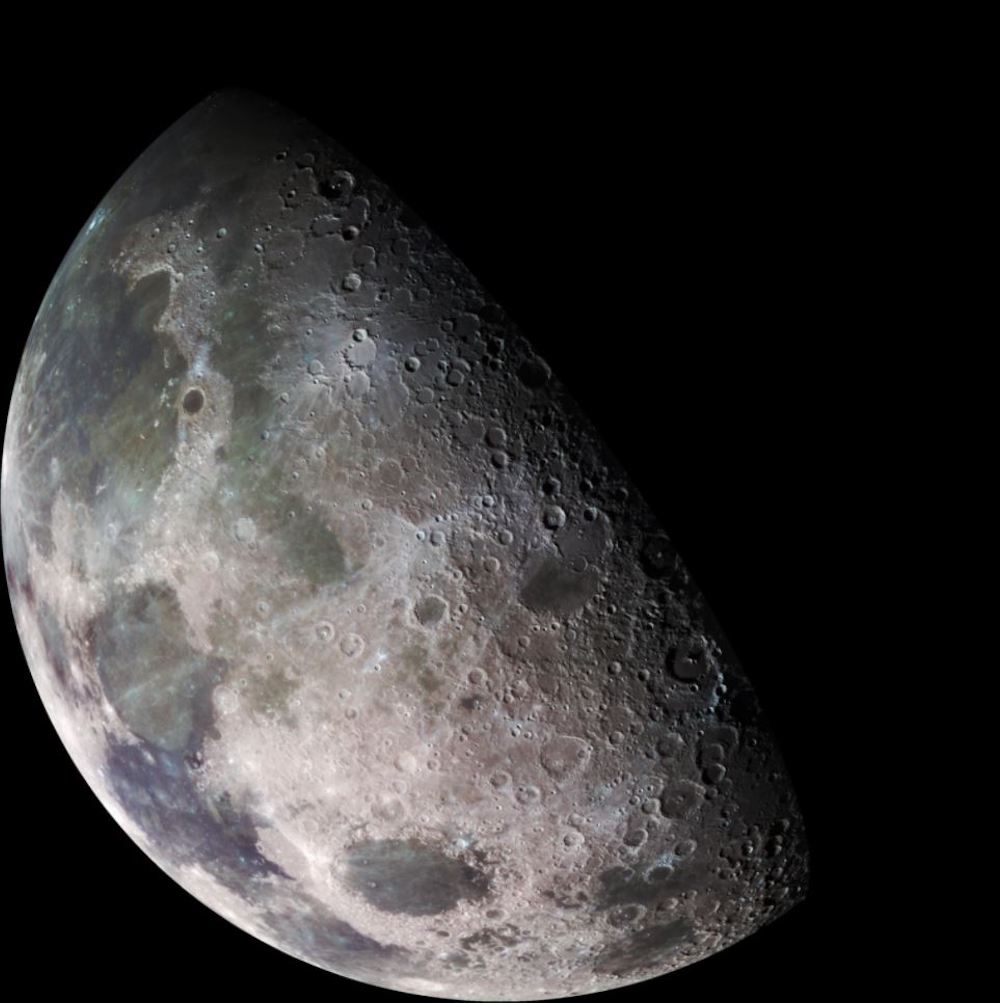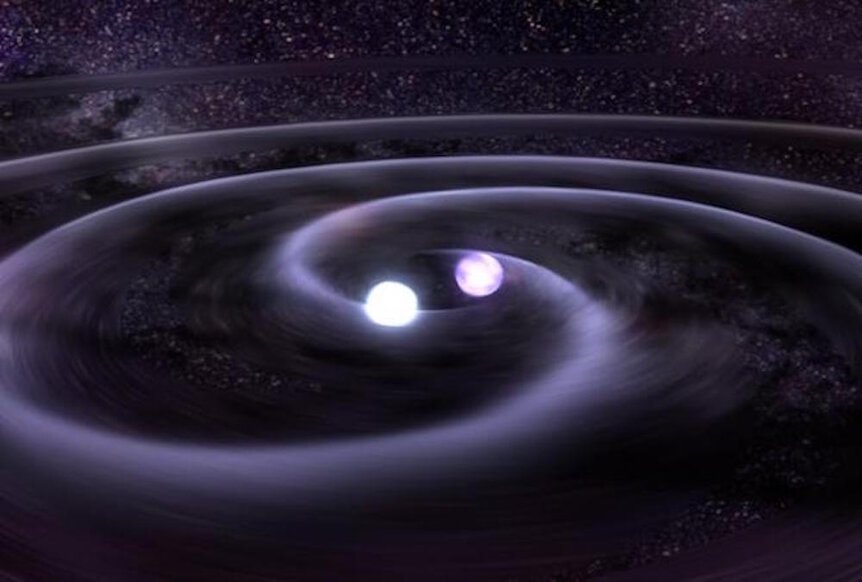Create a free profile to get unlimited access to exclusive videos, sweepstakes, and more!
Turning the Moon into a gravitational wave detector
That's no moon. It's a gravitational wave detector.

The potential existence of gravitational waves was first predicted by Albert Einstein in 1916, as a part of his general theory of relativity, but they weren’t detected until nearly a century later, in 2015. The idea, as presented by Einstein, is that truly massive accelerating objects in space create waves of gravity, not unlike waves of water, which emanate out from their source. Those gravitational waves ripple through space-time like the ripples caused by dropping a stone in a pond.
The trouble is the waves get smaller as they travel, and unless they happened to occur very nearby, by the time they reach us they are difficult to measure. So, scientists created special instruments called interferometers which use laser light to detect gravitational waves.
The first detections of gravitational waves occurred at the Laser Interferometer Gravitational Wave Observatory, LIGO for short, which picked up the rippling signature of waves generated by the collision of two black holes 1.3 billion light years away. Events like the collision of black holes are good targets for gravitational wave detections because of the comparatively large impact they have on space time, but it’s possible there are much smaller background waves we might be able to pick up through other means.
Alexander C. Jenkins and Diego Blas from the Theoretical Particle Physics and Cosmology Group at the University of London have proposed a method by which we could turn the Moon into a gigantic gravitational wave detector. Their findings were published in the journal Physical Review Letters.
Interferometers like the one at LIGO work by bouncing laser light along two parallel arms. The light from the lasers creates interference patterns as it travels back and forth. The instrument is looking for changes in the interference patterns, indicating a change in distance between the source, mirror, and detector as a result of gravitational waves. The new system would do the same thing, only instead of a sensitive instrument crafted by engineers, we’d be measuring light bounced off the surface of the Moon.
“When astronauts went to the Moon for the Apollo program, they left behind these big mirrors. We have lasers on the Earth, we shoot them at the mirrors on the Moon and it bounces back. By measuring the amount of time it takes them to bounce back we can measure the distance because we know the speed light travels at,” Jenkins told SYFY WIRE.
At present, scientists use the lunar mirrors and lasers to measure the orbit of the Moon, and they can get data with incredible accuracy, measuring the distance to the Moon at any given time down to the millimeter. They haven’t, however, used that information to detect background gravitational waves. At least not yet.
“You can think of gravitational waves as a stretching and squeezing of space and time. It’s hard to measure that if you have a single object. There’s no absolute center of the universe you can measure it relative to, but as soon as you have two objects, you can look at the distance between them and see how that changes,” Jenkins said.
This system of measurement would compliment existing instruments like LIGO by looking for gravitational waves in different frequencies outside what our current technology is capable of measuring. Specifically, Jenkins wants to look for background gravitational waves from the very early universe.
“There’s one kind of signal we talk about which is the cosmological phase transition,” Jenkins said.
He likened it to water boiling on the stove. The water is in a liquid state but wants to be a gas, so pockets of gas are generated which expand out. The early universe might have been a similar kind of phase transition but instead of steam, it would have created gravitational waves which might still be hitting the Moon today.
“In the very early universe, you can have these situations where you have a quantum field which is in one phase, but it wants to be in another. So, it starts nucleating bubbles in this new phase which expand and crash into each other and generate lots of gravitational waves,” Jenkins said.
Those waves would push on the Moon’s orbit, altering it every so slightly, and it’s those alterations we could measure by bouncing laser light off its surface. Moreover, the effect of the gravitational waves would be cumulative, so that the longer we look the more of the effect we should see. What might be even more exciting are the discoveries we can’t even imagine, which might be revealed by looking at these new gravitational wave frequencies.
“When we first invented radio telescopes in the 20th century nobody expected to discover pulsars or quasars. I think it’s the same thing here, by expanding our capabilities and looking in different frequency bands, we could discover completely unexpected things,” Jenkins said.
Measurements could feasibly start very soon. There’s still some work to be done on the software side, making sure we can accurately gather and interpret the data, but it doesn’t require building new instruments or facilities. The mirrors are already there, and we have our lasers trained on them, just waiting to see what new secrets the universe has in store.



























